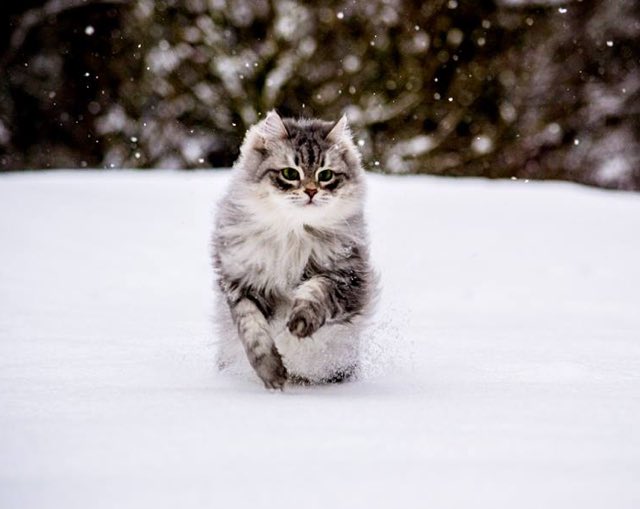
The Breed History
This is an ancient indigenous street cat from Russia. Controlled
breeding towards a uniform breed standard began only in the
1900s. This is the National Cat of Russia. Early records of a cat
meeting this description trace back to 1000 AD. No outcrosses
are allowed. First specimens arrived in the United States in 1990,
but the Siberian Forest Cat breed is still very rare in the USA. TICA
accepted them in 1998. The CFA had accepted this breed in the
Miscellaneous Class in 2000 and they achieved championship status
in 2006.
Physical Characteristics
Weight: 10-20 lb (4.5-9 kg), females smaller than males
Coat: Many coat colors and patterns are accepted. Brown tabby is
the most common. It is a very thick medium to semi-longhair plush
double-triple coat. Ruff, britches and tail are much longer haired.
Ears have full furnishings. The coat is a bit oily, a feature that helps
the coat repel water. Hair texture can vary somewhat with color but
is described as crispy.
In one study, Siberian forest cats had a 49% carrier rate for carriage
of the gene for pointing. This is a trait that is being gradually
eliminated from this breed. This variant is known as Neva Mascarade.
Eyes: Medium sized, and round.
Points of Conformation: This is a medium-large "rounded" cat
with a distinctively wild appearance. Skull is rounded and broad in
a modified wedge shape. Wide and low set medium-sized ears have
rounded tips. Ear furnishing is well developed, and ear tipping is
accepted. Paws are compact, round and large with toe tufting. The
tail is short to medium in length and is wide at the base, tapering to
a blunt tip.
Grooming: Moderate grooming needs, they have increased
shedding propensity in spring and fall; tending to blow their coat.
Need to watch for mats forming under limbs in axilla and groin.
Recognized Behavior Issues and Traits
Reported breed characteristics include: Not suited to lap cat
lifestyles. Siberian Forest cats are active and playful, though they
have a fairly passive personality. Siberians are friendly with other
cats and children. Soft voiced. They are good climbers, excellent
jumpers, and are suited for indoor-outdoor and outdoor lifestyles.
These cats can also live in apartment if proper climbing and
entertainment equipment is provided.
Normal Breed Variations
They are slow maturing (~4-5 years)
1/3rd of the American cats tested are low allergen protein (FeL d1)
which makes these cats suitable for some allergy sufferers.
Drug Sensitivities
None reported in the literature
Inherited Diseases
None reported in the literature
Disease Predispositions
None reported in the literature
Rare and Isolated Reports
Hypertrophic Cardiomyopathy (HCM): A single Siberian cat
tested positive for the Maine Coon cat (myosin binding protein C)
mutation.
Genetic Tests
None commercially available
Miscellaneous
- Breed name synonyms: Siberian, Sibirian, Sibirskaya Koshka
(historical SYN), Sibi
- Registries: FIFe (Siberian Cat), TICA (Siberian), CFA (Miscellaneous
class), ACFA (Siberian Cat), CFF, WCF (Siberian), GCCF (Siberian),
ACF (Siberian)
- Breed resources: Comrade Cat Club:
RR 1 Box 2460
Bowdoinham, ME 04008
TAIGA Siberian Cat Breed Club (CFA, TICA, ACFA, AACE):
www.homestead.com/taigasiberians
Photo Gallery of Breed - Siberian Forest Cat - Cat Breed
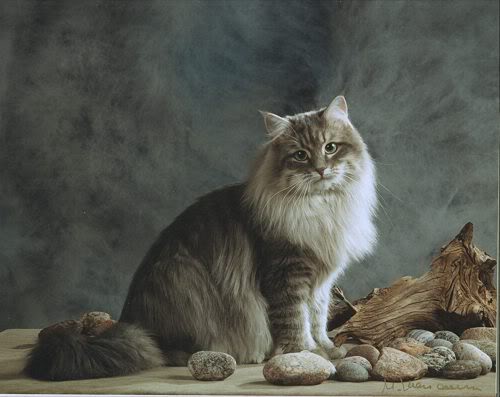


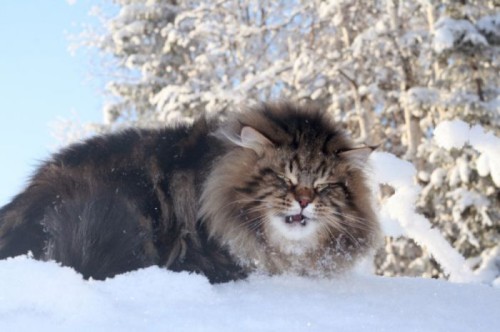
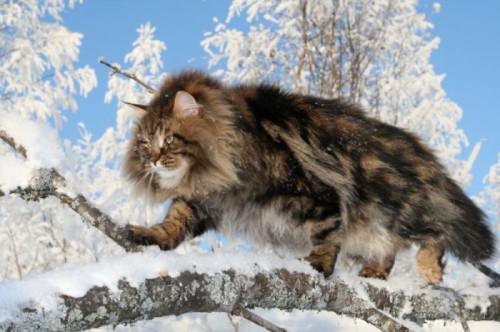
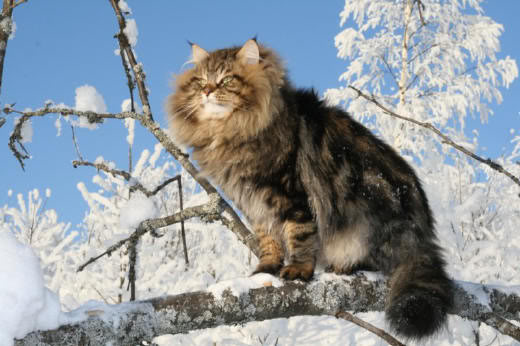
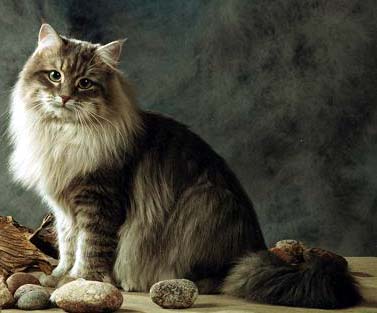
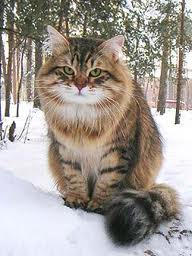
 Animalia Life
Animalia Life